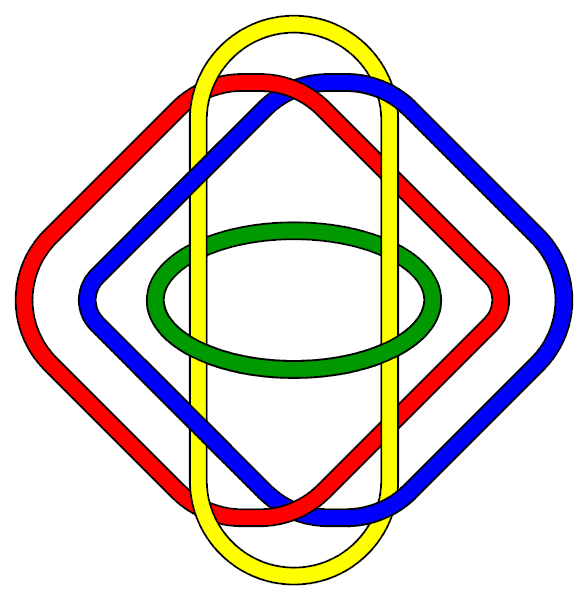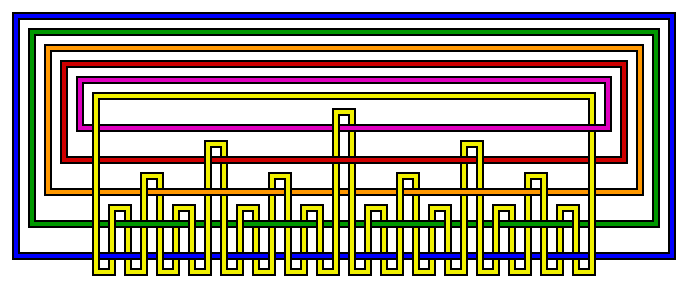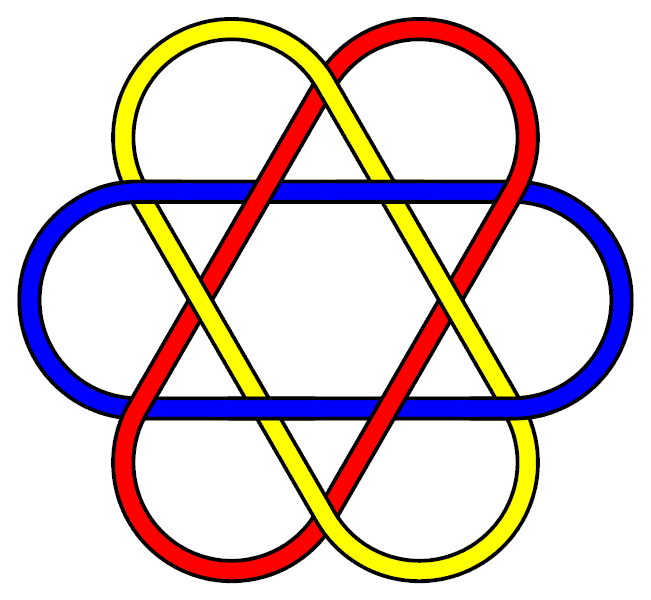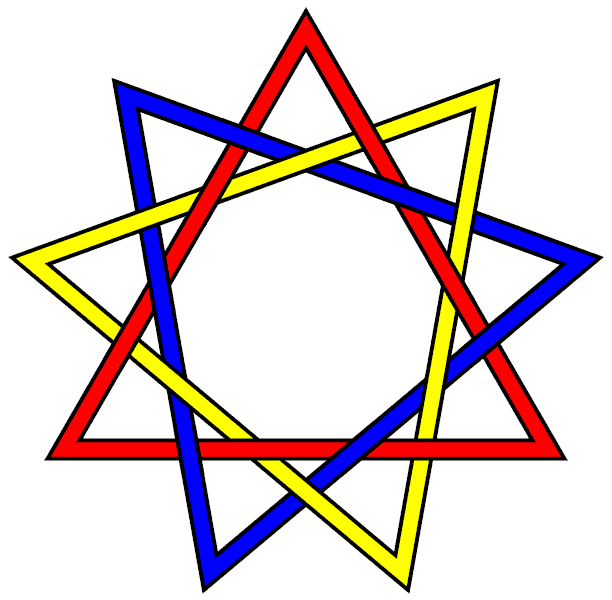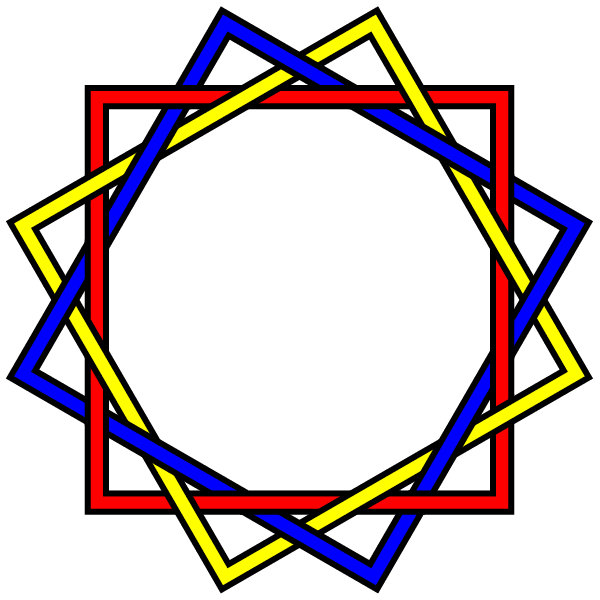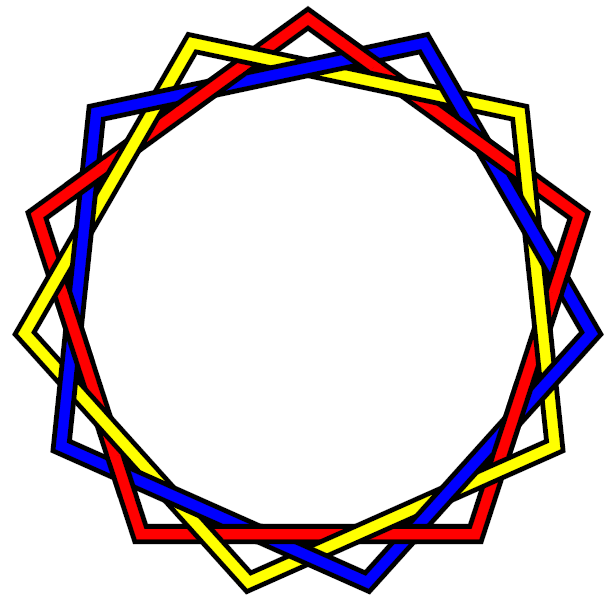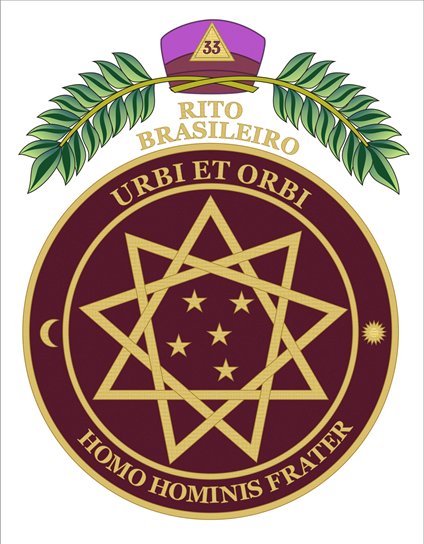Brunnian link: Difference between revisions
No edit summary |
No edit summary |
||
| Line 15: | Line 15: | ||
T. Kanenobu has proven there exist hyperbolic Brunnian links with arbitrarily many components. |
T. Kanenobu has proven there exist hyperbolic Brunnian links with arbitrarily many components. |
||
==Non-Borromean-rings Brunnian links in real world symbols== |
|||
[[Image:Selo Rito Brasileiro.jpg|thumb|Brazilian Masonic emblem with three interlaced triangles]] |
|||
==See also== |
==See also== |
||
Revision as of 20:04, 8 July 2010
A Brunnian link is a nontrivial link which becomes trivial if any component is removed. In other words, cutting any loop frees all the other loops (so that there is no Hopf link between any two loops).
The name Brunnian is after Hermann Brunn, whose 1892 article Über Verkettung included examples of such links.
The best-known and simplest possible Brunnian link is the Borromean rings, a link of three unknots. (This is also the only Brunnian link contained in tables which don't include links with 12 or more crossings.) However for every number three or above, there are an infinite number of links with the Brunnian property containing that number of loops. Here are some relatively simple three-component Brunnian links which are not the same as the Borromean rings:
T. Kanenobu has proven there exist hyperbolic Brunnian links with arbitrarily many components.
Non-Borromean-rings Brunnian links in real world symbols
See also
T.Kanenobu, Hyperbolic links with Brunnian properties. J. Math. Soc. Japan. Vol 38 No. 2, (1986) 295--308.
